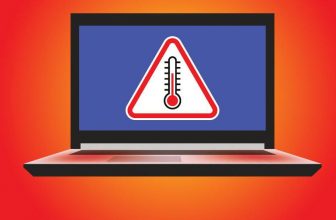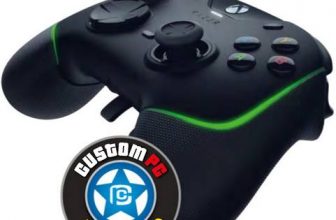Hasselblad cfv-50 review – BACK TO FRONT

Is this the most economical route into digital medium format photography? Just add any classic 500 Series Hasselblad body to the CFV 50c capture back and you’re ready to go.
You may not know this, but digital photography began with interchangeable capture devices – better known simply as backs – fitted to existing medium format SLR bodies. Those first backs were actually scanners which made for very long exposures and demanded static subjects, but we quickly moved onto area array sensors and the rest, as they say, is history.

But you may not know this either – you can still take this route into digital medium format photography, fitting a contemporary capture back to a film-era camera body. This body has to. of course, allow for the interchanging of film magazines so they can be replaced by the capture back, but there are still Bronicas, Mamiyas, the Contax 645AR Fujifilm’s GX680 models and a myriad of classic Hasselblads that can be converted to digital capture. Ironically, it’s Hasselblad that’s pursued a ‘closed loop’ policy with its H System, but most current Phase One and Mamiya Leaf backs can be fitted to the majority of 120/220 rollfilm SLRs (excluding some of the oldest models) via the appropriate adaptor plate and. in some cases, a sync cable.
But don’t worry. Hasselblad makes a product specifically for this application and. what’s more, it’s styled to look exactly like one of its classic rollfilm magazines. Incidentally, there’s now also a contemporary Hasselblad camera body – the H5X – which can be fitted with film magazines or, indeed, the capture backs from other manufacturers, but that’s another story. These days. Hasselblad differentiates between its H System which is based on the original 6×4.5cm format H1 (launched back in 2002) and V System which encompasses all the 500, 200 and 2000 series 6x6cm format cameras, dating back to the pioneering 500C from 1957.
Hasselblad’s CFV capture backs are specifically designed for the V System bodies, but the earlier models have all be equipped with CCD-type sensors, including the CFV 50. However, the CFV 50c model has a 50 megapixels CMOS sensor similar to the device that’s also on offer from Phase One, Pentax, Leica Mamiya Leaf, as well as being used in Hasselblad’s own H5D-50c digital camera system.
THE CLASSIC 500 SERIES SLR BODIES ARE PRETTY AFFORDABLE THESE DAYS SO EVEN FACTORING IN BUYING A COUPLE OF LENSES, THE SUB-S15K CFV 50C IS COMPARATIVELY AFFORDABLE ROUTE IN DIGITAL MEDIUM FORMAT PHOTOGRAPHY.
This means all the advantages of a big CMOS sensor can be applied to one of Hasselblad’s classic 6x6cm SLRs.
OK, so in reality, you probably wouldn’t press an original 500C back into service as a digital camera, but a 1970s-build 500C/M may well still have plenty of life left in it, and this is certainly the case with the later 503 and 501 models, likewise the EL/M and ELX motordriven bodies. All are fully mechanical and can be fitted with metering prisms, but the 503 Series haveTTL-OTF flash metering built into the camera bodies as do the motorised 500ELX, 503ELX, 553ELX and the last-of-the-line 555ELD. As all these cameras rely on leaf-type shutters in the lenses, flash sync is at all shutter speeds.
If you like the idea of using an EL ‘Blad, make sure that any 500EL/M or 500ELX you look at has been converted to use standard AA-size batteries (they originally used proprietary NiCd cells made by Varta and now impossible to find).
The 2000 series cameras have focal plane shutters, but were never equipped with metering of any sort. This came with the later 200 series (starting with the 205TCC in 1991), but these cameras weren’t built in big numbers so they’re harder to locate second-hand than the much more numerous 500 series models, but all have built-in TTL metering and aperture-priority auto exposure control (except for the entry-level 201F).
You can also use the CFV 50c on the SWC superwide (i.e. fixed lens) cameras from the original model to the last of the line 905, although there may be some optical performance issues with the older lenses which lack the later ZeissT* multi-coating.
The good news is that pre-loved 500 series SLR bodies are pretty affordable (and plentiful) these days so, even factoring in buying a couple of lenses, the sub-$15k CFV 50c is a comparatively affordable route in digital medium format photography or, more specifically. Hasselblad digital medium format photography. This is even more the case if you’re reviving a film camera kit that’s been sitting idle on a shelf for a while.
CLASSICAL GOOD LOOKS
As with the previous CFV capture backs, the 50c is styled to look exactly like a 6x6cm film magazine complete with chromed bright-work and leatherette inserts. It matches all the detailing on the camera bodies so only the 7.62 cm monitor screen and buttons on the back panel are the give-away. The compartment cover for the memory card slot is particularly cleverly done, and its shaping exactly matches the curve of the film magazines.
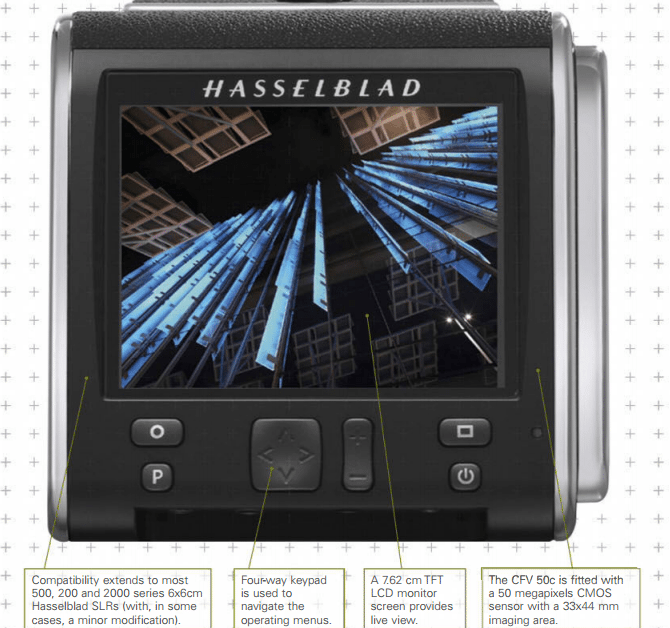
In many circumstances the operation is cordless (i.e. a sync cable isn’t needed), a first for V System bodies and made possible by utilising the same mechanical tab linkage used in the film magazines. In the film backs it served to detect whether the darkslide had been removed; locking the shutter if it hadn’t.
On the CFV 50c it essentially ‘wakes up’ the digital back in readiness for an exposure to be made. This applies to all the ‘analog’ 500 series models from the 500C to the 553ELX. If you want to go further and control the camera remotely (i.e. from a computer in a tethered situation) via Hasselblad’s Phocus software, then the supplied Exposure Cable EL is required for the EL/M and ELX motorised cameras; or the Exposure Cable 503CW for, logically, the 503CW when it’s fitted with the Winder CW.
Obviously, the non-motor 500 cameras can’t be remotely controlled from Phocus, and the 2000/200 models all require a flash input cable to sync the shutter release with the digital back. However, the 200 Series models can be modified to allow cable-free operation. In other words, one way or another, the CFV 50c allows the convenience of cable-free operation with pretty well any V System camera body.
Power comes from camcorder-style battery pack which clips to the back’s base. However, the EL cameras all have a rear extension from their own battery compartments which prevents this happening, so these models require an optional L-shaped adapter plate. This moves the battery connection bay through a little over 90 degrees into a near-vertical orientation so the pack is now located just behind the camera body’s extension, but still largely positioned under the capture back. This adaptor is also required when using the CFV back on the SWC cameras.
While it adds a bit more visual bulk, it doesn’t have any adverse effect on the handling or operations such as getting the camera on or off a tripod head.
GETTING STARTED
There is a small, but critical setup requirement which involves making a setting in the back’s menu for the particular type of camera in use – i.e. ‘ELD’, ‘ELX’, ‘500’ or ‘200’ – primarily because the shutter sequencing varies from model to model. Without the correct camera type setting selected, the back and body simply won’t talk to each other. By default, the back is set to a slowest exposure time of 1/8 second so, if you know that you’re going to be shooting with longer exposures, a new limit needs to be preset in the menu. With exposure times longer than 1/8 second, you encounter one of the limitations of cable-free shooting, namely that the sensor is being exposed to light both before and after the actual exposure which can cause colour shifts and other problems. A hit-and-miss solution is to increase the exposure time by between ten to 20 percent, but a better solution for anybody regularly using longer exposure times is to switch to using the sync cable which precisely controls when the sensor is active (but the camera setting then has to be changed to ‘Flash Sync’). Nevertheless, beyond this, set-up is very straightforward and many users probably won’t have to worry about the camera type setting ever again.
Subsequently, it’s a case of navigating the Settings menu to configure all the usual items such as the display options, audible signals, date and time, and power management. The CFV 50c’s menus are reasonably logically arranged and easy to navigate via a four-way keypad, although why the all-important Menu/Exit button is simply marked “o” is a bit of a mystery. Once you’ve selected a function, a plus/minus rocker switch is used to cycle through the options. The 7.62 cm monitor screen takes up most of the back’s rear panel, and while the resolution isn’t quoted in the specs, it’s reasonable to assume it’s the same 460,320 dots TFT LCD panel as is used on the H5D-50c camera.
LENSES AND VIEWFINDING
The sensor delivers a maximum resolution of 8272×6200 pixels (i.e. 51.2 megapixels) and has an imaging area of 32.9×43.8 mm which represents a focal length magnification factor of 1.45x with 6x6cm format lenses.
The widest-angle lens available for the V System is the Zeiss Distagon CF 30mm f3.5 -fiercesomely expensive in its day, and still not cheap now – which becomes a 43.5mm or, then translated into 35mm terms, close to a 24 mm. Not really ultra-wide anymore, but certainly OK for landscapes, for example. First though, find your 30mm Distagon so, more likely than not. you’ll end up with the 40mm f4.0 which is a little more affordable, especially the older versions. It effectively becomes a 58mm -equivalent to around 32 mm in 35mm format terms – so going down the CFV 50c route does
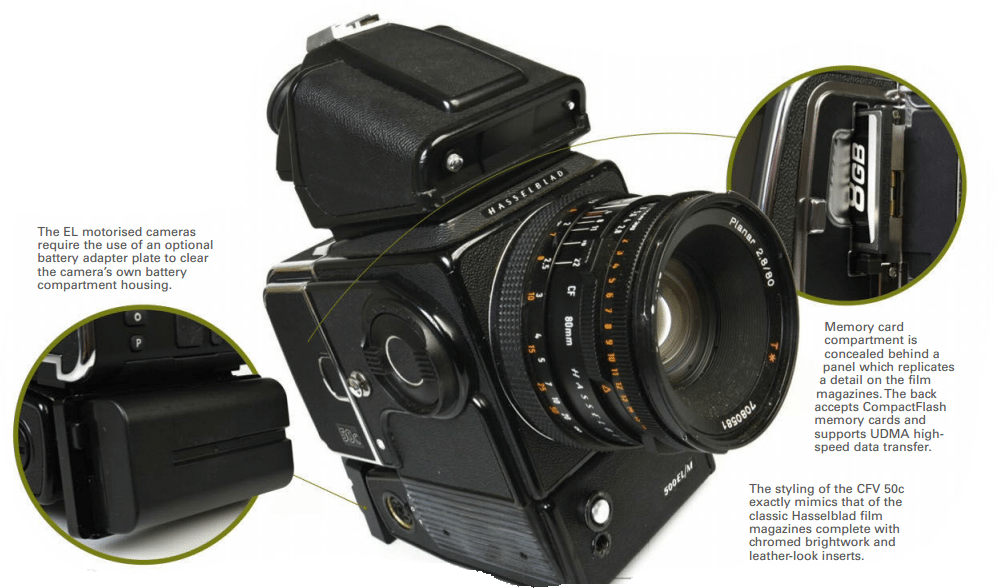
THE LEVEL OF DETAILING MAINTAINED AT THE HIGHER ISOs IS ANOTHER BENEFIT OF THE BIGGER SENSOR VERSUS, SAY, A D-SLR WITH A FULL-35MM FORMAT IMAGER.
mean some limitations on wide-angle lens capabilities. This is also true when using it on the SWC cameras with their fixed Zeiss Biogon 38mm f4.5 lenses. And the prospect of any new wider-angle V System lenses from Hasselblad (or, indeed, anybody else) is approximately zero. While we’re here, another issue is that the sensor isn’t square (and it doesn’t rotate) so you can either select this aspect ratio in the Custom Options menu, thereby introducing another cropping factor, or live with mostly shooting in the horizontal orientation… classic Hasselblads having never been designed with vertical handling in mind. It’s easier to use one of these cameras in the vertical if it’s mounted on a tripod, and this is where the live view function really comes into its own as you can by-pass the viewfinder and use the monitor screen instead. However, when using the finder, the back is supplied with a dedicated Acutematt split-image focusing screen which has masking for the full sensor area and the cropped square image.
Live view wasn’t initially available as a standalone feature, but all CFV 50c backs shipping now have the necessary firmware upgrade.
Hasselblad’s ‘Instant Approval Architecture’ system provides both visual and audible confirmation of good exposures. Alternatively, the preview options include the option of separate RGB histograms or a combined RGB graphic or, thirdly, a brightness histogram over which are laid the RGB channel traces. There’s also the choice of a full screen preview or a standard preview which includes the file number, basic capture information (i.e. ISO and WB) and a number of indicator tiles – relating to the control panel – for performing subsequent actions. Browsing is via the navigator keypad and there’s a zooming function with an insert view providing a position reference, a nine-image thumbnail screen or a folder view.
With its big 5.3 micron pixels, the CMOS delivers an extended sensitivity range equivalent to ISO 100 to 6400, and a massive 14.5 stops of dynamic range. The maximum exposure duration is 12 minutes and the continuous shooting speed is 1.5 fps, but obviously only single-shot capture is possible with the non-motorised camera bodies. The CFV 50c captures 16-bit RAW files in the Hasselblad 3FR format with the option of appending one-quarter resolution (i.e. 12.5 megapixels) JPEGs. This is another consideration for anybody contemplating a move up to digital medium format photography – RAW capture is mostly the norm and these files need to be processed post-camera which demands time and a big increase in your storage capacity.
PERFORMANCE
We tested the CFV 50c on a 1982-vintage 500EL/M which obviously required fitting the battery adapter plate. After a little toing-and-froing with creating the camera type setting, we were off and running with no further problems. It’s as simple as switching on the back, selecting the desired ISO and white balance (there’s a choice of presets or manual colour temperature settings from 2000 to 10,000 degrees Kelvin), and then setting the apertures and shutter speeds on the lens. You can use the back as an exposure ‘meter’, determining exposures by trial and error, but it’s probably much quicker to simply use a hand-held meter (assuming the camera isn’t fitted with a metering prism).
Returning briefly to the discussion of lenses, various corrections for most Zeiss CF, CFE, CFi, F and FE lenses are available in Phocus which overcomes some of their film-era performance characteristics and deficiencies. These comprise distortion, lateral chromatic aberrations and vignetting. Phocus also has moiré pattern removal and Hasselblad’s one-size-fits-all ‘Natural Colour Selection’ profile (which analyses image content) to determine the most suitable reproduction and correction. You can use Adobe Lightroom for processing the 3FR RAW files, but the all-important DAC lens corrections aren’t supported. We’ve now experienced this 50 MP CMOS sensor in various capture devices including the Pentax 645Z and Phase One IQ3 50. but each obviously uses different processors to manage digitisation and noise reduction (performed on-chip), and compression and colour management. This amount of resolution delivers lots of crisply-defined fine detailing, and the wide dynamic range – particularly impressive in terms of the shadows – once again proves the value of big sensors with big pixels.
The colour reproduction, once Phocus has done its stuff, is exceptional and surprisingly transparency-like, a quality that’s perhaps partially down to the contrast and colour of vintage Zeiss optics. Noise levels are negligible up to ISO 1600 and still acceptably low at ISO 3200 and 6400, sensitivity ‘speeds’ you could never explore when a film magazine was attached to your 500 series SLR body. And while the CCD-equipped back struggled at ISO 800, even at ISO 6400 the 50c looks better. The level of detailing maintained at the higher ISOs is another benefit of the bigger sensor versus, say. a D-SLR with a full-35mm format imager.
Not surprisingly, there can be some lens performance issues -chromatic aberrations and colour shifts – which the DAC correction in Phocus deals with effectively.
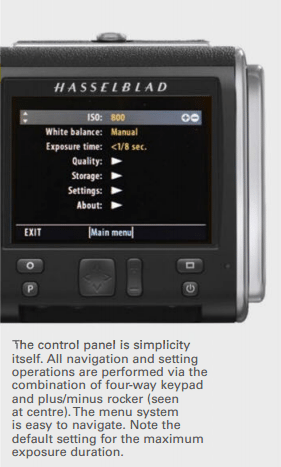
The control panel is simplicity itself. All navigation and setting operations are performed via the combination of four-way keypad and plus/minus rocker (seen at centre).The menu system is easy to navigate. Note the default setting for the maximum exposure duration.
It’s probably self-evident, but the Phocus software is very much part of the whole package as far as the CFV 50c is concerned.
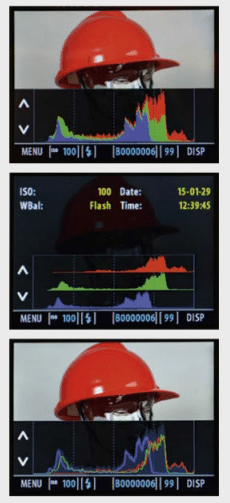
Preview options comprise (from top) an image overlaid with RGB histograms, an image with a full set of histograms (brightness shown by the grey background graph), or a set of RGB histograms accompanied by basic capture details.
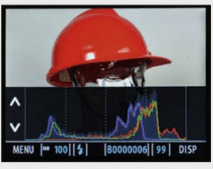
Zooming function assisted by an inset image with a reference target.
Features
THE VERDICT
Marrying mechanical cameras with their origins in the 1950s with the latest in 21st century digital capture technologies is never going to be without compromises, but in practice Hasselblad has done a very good job of minimising them.
The CFV 50c is a truly cable-free solution on the 500 series bodies which probably represent the majority of host cameras given their popularity in the day and plentiful supply now. Consequently, for many potential buyers, the in-the-field experience actually isn’t all that different to shooting with rollfilm. Certainly the handling and basic camera operations are unchanged and. of course, the visual integration of the old and the new is very well done.
THE 500 SERIES HASSELBLADS WERE HUGELY POPULAR FOR LOTS OF GOOD REASONS, SO THE IDEA OF REVIVING THEM AS A WORKABLE DIGITAL CAMERA IS NOT ONLY FEASIBLE, BUT VERY ATTRACTIVE.
The smaller (than 6x6cm) sensor size and its aspect ratio aren’t issues unique to Hasselblad and are the same if you choose to fit the Phase One or Mamiya Leaf 50 MP CMOS-equipped backs to a V System camera body. The simplest solution in many cases will be to shoot in the landscape format and then crop the image later on as required given there’s plenty of ‘room to move’ in terms of the resolution. It’s also worth noting that, compared to the Phase One and Mamiya Leaf products, the Hasselblad back is hugely affordable, even more so if you already have the bodies and lenses. The Pentax 645Z is more affordable again (and. it has to be said, much more capable), but start adding up the purchasing of a couple of lenses and the difference actually isn’t all that great in the end.
The 500 series ‘Blads were hugely popular for lots of good reasons, many of which still apply today, so the idea of reviving them as a workable digital camera is not only feasible, but very attractive. Thus, the great joy of the CFV 50c is being able to use the likes of the 500C/M and 500EL/M again and re-acquaint yourself with just how right these cameras still feel. Despite how much camera tech has arrived since, the classic Hasselblads provide a degree of comfort and convenience that belie their fully manual operation… no wonder they remained in production, in one form or another, for 56 years. There’s a lesson in there somewhere.
VITAL STATISTICS
HASSELBLAD CFV 50C $14,999 capture back only
Type: Fully portable digital camera back for one-shot RGB capture.
Supported Cameras: Hasselblad V System (i.e. most 500-series models since 1957). The 2000 and 200-series models with some limitations. View and wide-angle cameras via V System adaptor plate.
Sensor Type/Size: CMOS. 32.9×43.8 mm. Number of Pixels: 50 million (6200×8272 pixels). Focal Length Conversion Factor: 1.45xwith 6x6cm format lenses.
A/D Conversion: 16-bit per RGB colour.
Storage Medium: CompactFlash memory cards with UDMA speed support.
Data Compression: Lossless on Hasselblad 3F RAW files. Typical file size is 65 MB. JPEG compression on 12.5 megapixels ‘print ready’ files. Sensitivity Range: ISO 100 – 6400.
Shooting Speed: 1.5 frames per second.
White Balance: Presets for Daylight. Cloudy, Shade. Flash. Fluorescent and Tungsten. Manual colour temperature setting from 2000 to 10.000 degrees Kelvin. Custom setting via grey card.
Power Source: Rechargeable 8.4 volts lithium-ion battery.
Features: Styled to replicate the look of a classic V System film magazine, cable-free connection. 7.62 cm TFT LCD monitor (460.320 dots), live view, real-time histogram, overexposure indicator. ‘Hasselblad Natural Colour’ generic profile. ‘Instant Approval Architecture’ visual and audible feedback indicators. FireWire 800 connection, long exposures up to 12 minutes, digital lens correction for Zeiss lenses (distortion. lateral chromatic aberrations and vignetting) in supplied Phocus software, 14 stops of dynamic range.
Dimensions (WxHxD): 91x92x57 mm Weight: 530 grams (excluding battery pack and memory card).
Price: $14,990 which includes Phocus software, dedicated focusing screen and Exposure Cable EL. L-shaped battery adapter plate costs $440. Distributor: C.R. Kennedy & Company Pty Ltd. telephone (03) 9823 1555. or please visit www.hasselblad.com.au


